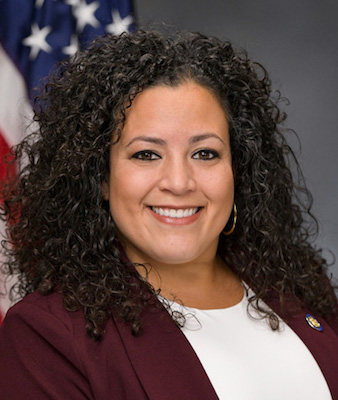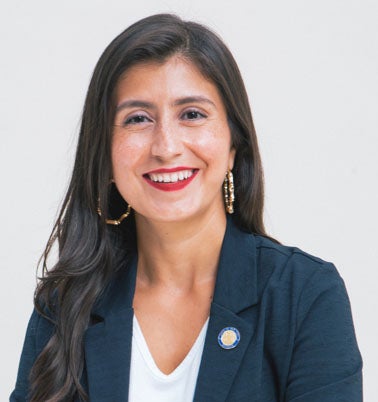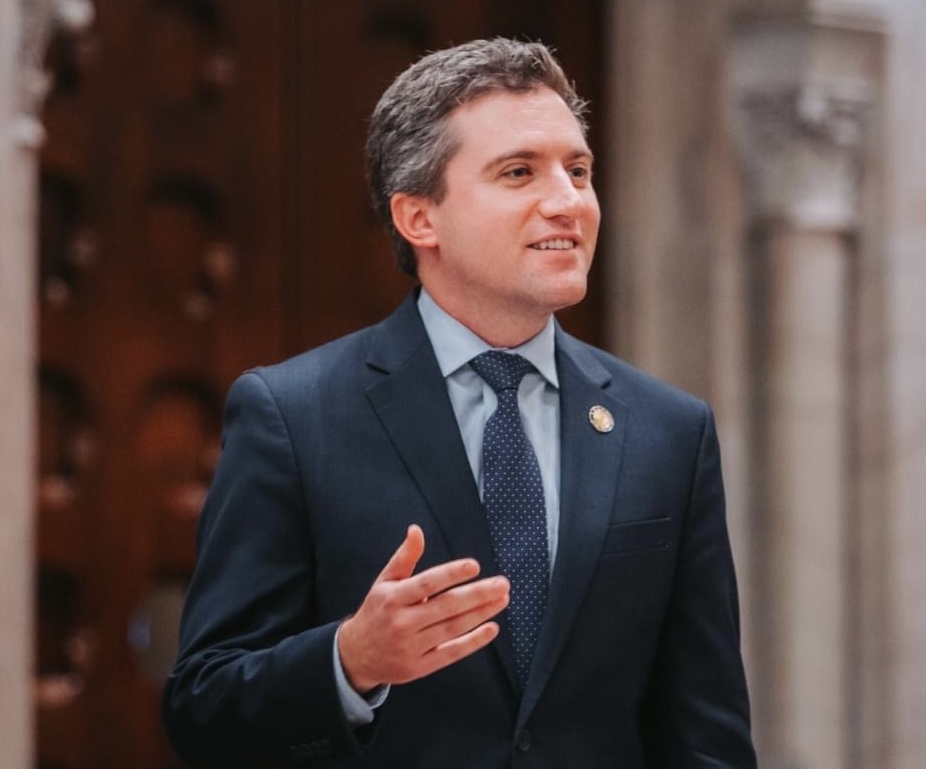S. 2782 2
RESIDENTS AND SECTION SIX HUNDRED THIRTY-SEVEN-A OF THIS ARTICLE WITH
RESPECT TO NONRESIDENTS AND PART-YEAR RESIDENTS.
(C) EXCLUSIONS FROM INHERITANCE INCOME. (1) EDUCATIONAL OR MEDICAL
EXPENSES. A QUALIFIED TRANSFER, AS SUCH TERM IS DEFINED IN PARAGRAPH (2)
OF SUBSECTION (E) OF SECTION TWO THOUSAND FIVE HUNDRED THREE OF THE
INTERNAL REVENUE CODE, SHALL NOT BE CONSIDERED INHERITANCE INCOME FOR
PURPOSES OF THIS SECTION.
(2) SPOUSAL TRANSFERS. TRANSFERS OF PROPERTY FROM A SPOUSE SHALL NOT
BE CONSIDERED INHERITANCE INCOME FOR PURPOSES OF THIS SECTION.
(3) RETIREMENT ACCOUNTS. TRANSFERS OF PROPERTY CONSISTING OF PENSIONS,
HEALTH SAVINGS ACCOUNTS, OR RETIREMENT ACCOUNTS ESTABLISHED PURSUANT TO
SECTIONS FOUR HUNDRED ONE, FOUR HUNDRED THREE, FOUR HUNDRED EIGHT, FOUR
HUNDRED EIGHT-A, OR FOUR HUNDRED FIFTY-SEVEN OF THE INTERNAL REVENUE
CODE SHALL NOT BE CONSIDERED INHERITANCE INCOME FOR PURPOSES OF THIS
SECTION.
(4) CERTAIN RESIDENCES. AN INDIVIDUAL SUBJECT TO THE TAX IMPOSED BY
THIS SECTION MAY CLAIM NOT MORE THAN ONE OF THE FOLLOWING EXCLUSIONS
FROM INHERITANCE INCOME, AND MAY NOT CLAIM EITHER SUCH EXCLUSION FOR
MORE THAN ONE TRANSFER OF REAL PROPERTY:
(A) PRIMARY RESIDENCES. FOR REAL PROPERTY TRANSFERRED TO A RESIDENT,
NONRESIDENT OR PART-YEAR RESIDENT INDIVIDUAL THAT (I) SERVES AS THE
PRIMARY RESIDENCE OF THE TRANSFEROR OF SUCH PROPERTY OR OF THE RESIDENT,
NONRESIDENT, OR PART-YEAR RESIDENT TRANSFEREE FOR THE TEN CONSECUTIVE
YEARS PRECEDING SUCH TRANSFER OR (II) SERVES AS THE PRIMARY RESIDENCE OF
SUCH TRANSFEREE FOR THE FIVE CONSECUTIVE YEARS FOLLOWING SUCH TRANSFER,
UP TO ONE MILLION SEVEN HUNDRED FIFTY THOUSAND DOLLARS OF THE VALUE OF
SUCH PROPERTY SHALL NOT BE CONSIDERED INHERITANCE INCOME FOR PURPOSES OF
THIS SECTION.
(B) RESIDENTIAL HOMES PURCHASED WITH A FEDERAL HOUSING ADMINISTRATION
INSURED MORTGAGE. FOR A RESIDENTIAL HOME TRANSFERRED TO A RESIDENT,
NONRESIDENT OR PART-YEAR RESIDENT INDIVIDUAL THAT WAS PURCHASED WITH A
FEDERAL HOUSING ADMINISTRATION INSURED MORTGAGE, UP TO SEVEN HUNDRED
FIFTY THOUSAND DOLLARS OF THE VALUE OF SUCH HOME SHALL NOT BE CONSIDERED
INHERITANCE INCOME FOR PURPOSES OF THIS SECTION.
(5) FAMILY FARMS. A TRANSFER TO A RESIDENT, NONRESIDENT OR PART-YEAR
RESIDENT INDIVIDUAL FROM THE ESTATE OF A DECEDENT WHO IS A FAMILY MEMBER
OF SUCH INDIVIDUAL OF FARMLAND AND FARM EQUIPMENT SHALL NOT BE CONSID-
ERED INHERITANCE INCOME FOR PURPOSES OF THIS SECTION PROVIDED THAT THE
TOTAL VALUE OF INHERITANCE INCOME (INCLUDING THE VALUE OF SUCH FARMLAND
AND FARM EQUIPMENT) RECEIVED BY SUCH INDIVIDUAL FROM SUCH ESTATE DOES
NOT EXCEED FIVE MILLION DOLLARS, AND PROVIDED FURTHER THAT THE VALUE OF
SUCH FARMLAND AND EQUIPMENT CONSTITUTES OVER FIFTY PERCENT OF THE TOTAL
VALUE OF SUCH INHERITANCE INCOME RECEIVED FROM SUCH ESTATE.
(D) DEFERRALS. (1) PRIMARY RESIDENCE LIQUIDITY DEFERRAL. A RESIDENT,
NONRESIDENT OR PART-YEAR RESIDENT INDIVIDUAL WHO IN A TAXABLE YEAR
RECEIVES FROM A SINGLE ESTATE INHERITANCE INCOME TOTALING LESS THAN FIVE
MILLION DOLLARS, OVER FIFTY PERCENT OF THE TOTAL VALUE OF WHICH CONSISTS
OF REAL PROPERTY THAT WILL SERVE AS THE PRIMARY RESIDENCE OF SUCH INDI-
VIDUAL, MAY ELECT TO DEFER PAYMENT OF THE TAX IMPOSED BY THIS SECTION
UNTIL THE TIME AT WHICH SUCH INDIVIDUAL SELLS SUCH REAL PROPERTY OR
CEASES USING SUCH PROPERTY AS A PRIMARY RESIDENCE.
(2) FAMILY-OWNED BUSINESS LIQUIDITY DEFERRAL. (A) A RESIDENT, NONRESI-
DENT OR PART-YEAR RESIDENT INDIVIDUAL WHO IN A TAXABLE YEAR RECEIVES
FROM THE ESTATE OF A DECEDENT WHO IS A FAMILY MEMBER OF SUCH INDIVIDUAL
INHERITANCE INCOME TOTALING LESS THAN FIVE MILLION DOLLARS, OVER FIFTY
PERCENT OF THE TOTAL VALUE OF WHICH CONSISTS OF EQUITY INTERESTS IN A
S. 2782 3
FAMILY-OWNED BUSINESS, MAY ELECT TO DEFER PAYMENT OF THE TAX IMPOSED BY
THIS SECTION UNTIL THE TIME AT WHICH SUCH INDIVIDUAL SELLS SUCH BUSI-
NESS, PROVIDED THAT DURING THE TIME OF DEFERRAL INTEREST WILL ACCRUE ON
THE AMOUNT OF SUCH TAX AT A RATE EQUAL TO THE FEDERAL SHORT-TERM RATE AS
PROVIDED UNDER PARAGRAPH THREE OF SUBSECTION (J) OF SECTION SIX HUNDRED
NINETY-SEVEN OF THIS ARTICLE.
(B) FOR THE PURPOSES OF THIS PARAGRAPH, "FAMILY-OWNED BUSINESS" MEANS
A BUSINESS FOR WHICH, AT THE TIME OWNERSHIP OF SUCH BUSINESS IS TRANS-
FERRED TO A RESIDENT, NONRESIDENT OR PART-YEAR RESIDENT INDIVIDUAL, THE
TRANSFEROR OF SUCH BUSINESS OR FAMILY MEMBERS OF SUCH TRANSFEROR COLLEC-
TIVELY HAVE RETAINED MAJORITY OWNERSHIP AND HAVE MATERIALLY PARTICIPATED
IN THE OPERATION OF SUCH BUSINESS FOR THE TEN CONSECUTIVE YEARS PROCEED-
ING SUCH TRANSFER.
§ 604-A. SEPARATE TAX ON GIFT INCOME. (A) DEFINITIONS. FOR THE
PURPOSES OF THIS SECTION, THE FOLLOWING TERMS SHALL HAVE THE FOLLOWING
MEANINGS:
(1) "GIFT INCOME" MEANS THE VALUE OF ANY TAXABLE GIFTS, AS SUCH TERM
IS DEFINED IN SECTION ONE THOUSAND OF THIS CHAPTER, RECEIVED BY AN INDI-
VIDUAL WHO IS A NEW YORK STATE RESIDENT AT THE TIME OF RECEIVING SUCH
GIFTS.
(2) "FAMILY MEMBER" MEANS "MEMBER OF THE FAMILY" AS SUCH TERM IS
DEFINED IN PARAGRAPH (2) OF SUBSECTION (E) OF SECTION TWO THOUSAND THIR-
TY-TWO-A OF THE INTERNAL REVENUE CODE.
(B) IMPOSITION OF SEPARATE TAX. (1) IN ADDITION TO ANY OTHER TAX
IMPOSED BY THIS ARTICLE, THERE IS HEREBY IMPOSED FOR EACH TAXABLE YEAR A
SEPARATE TAX ON GIFT INCOME RECEIVED DURING SUCH TAXABLE YEAR BY ANY
RESIDENT OR PART-YEAR RESIDENT INDIVIDUAL.
(2) THE TAX IMPOSED BY THIS SECTION SHALL BE COMPUTED AS PROVIDED IN
SECTION SIX HUNDRED TWENTY-FOUR-B OF THIS ARTICLE WITH RESPECT TO RESI-
DENTS AND SECTION SIX HUNDRED THIRTY-SEVEN-B OF THIS ARTICLE WITH
RESPECT TO PART-YEAR RESIDENTS.
(C) EXCLUSIONS FROM GIFT INCOME. (1) EDUCATIONAL OR MEDICAL EXPENSES.
A QUALIFIED TRANSFER, AS SUCH TERM IS DEFINED IN PARAGRAPH (2) OF
SUBSECTION (E) OF SECTION TWO THOUSAND THREE OF THE INTERNAL REVENUE
CODE, SHALL NOT BE CONSIDERED GIFT INCOME FOR PURPOSES OF THIS SECTION.
(2) SPOUSAL TRANSFERS. TRANSFERS OF PROPERTY FROM A SPOUSE SHALL NOT
BE CONSIDERED GIFT INCOME FOR PURPOSES OF THIS SECTION.
(3) RETIREMENT ACCOUNTS. TRANSFERS OF PROPERTY CONSISTING OF PENSIONS,
HEALTH SAVINGS ACCOUNTS, OR RETIREMENT ACCOUNTS ESTABLISHED PURSUANT TO
SECTIONS FOUR HUNDRED ONE, FOUR HUNDRED THREE, FOUR HUNDRED EIGHT, FOUR
HUNDRED EIGHT-A, OR FOUR HUNDRED FIFTY-SEVEN OF THE INTERNAL REVENUE
CODE SHALL NOT BE CONSIDERED GIFT INCOME FOR PURPOSES OF THIS SECTION.
(4) FAMILY FARMS. A TRANSFER TO A RESIDENT OR PART-YEAR RESIDENT INDI-
VIDUAL FROM A DONOR WHO IS A FAMILY MEMBER OF SUCH INDIVIDUAL OF FARM-
LAND AND FARM EQUIPMENT SHALL NOT BE CONSIDERED GIFT INCOME FOR PURPOSES
OF THIS SECTION PROVIDED THAT THE TOTAL VALUE OF GIFT INCOME (INCLUDING
THE VALUE OF SUCH FARMLAND AND FARM EQUIPMENT) RECEIVED BY SUCH INDIVID-
UAL FROM SUCH DONOR DOES NOT EXCEED ONE MILLION DOLLARS.
(D) FAMILY-OWNED BUSINESS LIQUIDITY DEFERRAL. (1) A RESIDENT OR PART-
YEAR RESIDENT INDIVIDUAL WHO IN A TAXABLE YEAR RECEIVES FROM A DONOR WHO
IS A FAMILY MEMBER OF SUCH INDIVIDUAL GIFT INCOME TOTALING LESS THAN
FIVE MILLION DOLLARS, OVER FIFTY PERCENT OF THE TOTAL VALUE OF WHICH
CONSISTS OF EQUITY INTERESTS IN A FAMILY-OWNED BUSINESS, MAY ELECT TO
DEFER PAYMENT OF THE TAX IMPOSED BY THIS SECTION UNTIL THE TIME AT WHICH
SUCH INDIVIDUAL SELLS SUCH EQUITY INTERESTS, PROVIDED THAT DURING THE
TIME OF DEFERRAL INTEREST WILL ACCRUE ON THE AMOUNT OF SUCH TAX AT A
S. 2782 4
RATE EQUAL TO THE FEDERAL SHORT-TERM RATE AS PROVIDED UNDER PARAGRAPH
THREE OF SUBSECTION (J) OF SECTION SIX HUNDRED NINETY-SEVEN OF THIS
ARTICLE.
(2) FOR THE PURPOSES OF THIS SUBSECTION, "FAMILY-OWNED BUSINESS" MEANS
A BUSINESS FOR WHICH, AT THE TIME OWNERSHIP OF SUCH BUSINESS IS TRANS-
FERRED TO A RESIDENT OR PART-YEAR RESIDENT INDIVIDUAL, THE TRANSFEROR OF
SUCH BUSINESS OR FAMILY MEMBERS OF SUCH TRANSFEROR COLLECTIVELY HAVE
RETAINED MAJORITY OWNERSHIP AND HAVE MATERIALLY PARTICIPATED IN THE
OPERATION OF SUCH BUSINESS FOR THE TEN CONSECUTIVE YEARS PROCEEDING SUCH
TRANSFER.
§ 2. The tax law is amended by adding a new section 620-b to read as
follows:
§ 620-B. CREDIT AGAINST SEPARATE TAX ON INHERITANCE INCOME. A RESIDENT
SHALL BE ALLOWED A CREDIT AGAINST THE TAX IMPOSED BY SECTION SIX HUNDRED
FOUR OF THIS ARTICLE IN THE AMOUNT OF THE ESTATE TAX IMPOSED BY ARTICLE
TWENTY-SIX OF THIS CHAPTER OR ANY ESTATE OR INHERITANCE TAX IMPOSED BY
ANOTHER STATE OF THE UNITED STATES, A POLITICAL SUBDIVISION OF SUCH
STATE, OR THE DISTRICT OF COLUMBIA, UPON ANY INHERITANCE INCOME, AS SUCH
TERM IS DEFINED IN SUCH SECTION, RECEIVED BY SUCH RESIDENT IN A TAXABLE
YEAR. SUCH RESIDENT MAY ELECT TO CALCULATE THE AMOUNT OF SUCH CREDIT IN
ACCORDANCE WITH EITHER SUBSECTION (A) OR SUBSECTION (B) OF THIS SECTION.
(A) THE AMOUNT OF CREDIT ALLOWED PURSUANT TO THIS SECTION MAY BE
CALCULATED BY MULTIPLYING THE TOTAL AMOUNT OF ESTATE OR INHERITANCE TAX
IMPOSED BY THIS STATE, ANOTHER STATE OF THE UNITED STATES, A POLITICAL
SUBDIVISION OF SUCH STATE, OR THE DISTRICT OF COLUMBIA ON THE ESTATE
FROM WHICH SUCH RESIDENT HAS RECEIVED INHERITANCE INCOME BY A FRACTION,
THE NUMERATOR OF WHICH IS THE AMOUNT OF INHERITANCE INCOME RECEIVED BY
SUCH RESIDENT FROM SUCH ESTATE AND THE DENOMINATOR OF WHICH IS THE TOTAL
VALUE OF SUCH ESTATE AFTER THE FEDERAL ESTATE TAX HAS BEEN PAID BUT
BEFORE THE ESTATE TAX OF THIS STATE, OR ANY ESTATE OR INHERITANCE TAX
IMPOSED BY ANOTHER STATE OF THE UNITED STATES, A POLITICAL SUBDIVISION
OF SUCH STATE, OR THE DISTRICT OF COLUMBIA, HAS BEEN PAID. IN ORDER TO
CALCULATE SUCH CREDIT IN ACCORDANCE WITH THIS SUBSECTION, SUCH RESIDENT
MUST KNOW THE TOTAL AMOUNT OF ESTATE OR INHERITANCE TAX IMPOSED ON SUCH
ESTATE BY THIS STATE, ANOTHER STATE OF THE UNITED STATES, A POLITICAL
SUBDIVISION OF SUCH STATE, OR THE DISTRICT OF COLUMBIA AND THE TOTAL
VALUE OF SUCH ESTATE AFTER THE FEDERAL ESTATE TAX HAS BEEN PAID BUT
BEFORE THE ESTATE OR INHERITANCE TAX OF THIS STATE, ANOTHER STATE OF THE
UNITED STATES, A POLITICAL SUBDIVISION OF SUCH STATE, OR THE DISTRICT OF
COLUMBIA, HAS BEEN PAID.
(B) THE AMOUNT OF CREDIT ALLOWED PURSUANT TO THIS SECTION MAY BE
CALCULATED AS EQUAL TO THE AMOUNT OF ESTATE TAX OR INHERITANCE TAX OF
THIS STATE, ANOTHER STATE OF THE UNITED STATES, A POLITICAL SUBDIVISION
OF SUCH STATE, OR THE DISTRICT OF COLUMBIA, THAT WOULD BE IMPOSED ON THE
ESTATE FROM WHICH SUCH RESIDENT RECEIVES INHERITANCE INCOME AS IF SUCH
INHERITANCE INCOME WERE EQUAL TO THE TOTAL VALUE OF SUCH ESTATE.
§ 3. The tax law is amended by adding two new sections 624-a and 624-b
to read as follows:
§ 624-A. COMPUTATION OF SEPARATE TAX ON INHERITANCE INCOME RECEIVED BY
A RESIDENT INDIVIDUAL. THE AMOUNT OF TAX IMPOSED UNDER SECTION SIX
HUNDRED FOUR OF THIS ARTICLE FOR ANY TAXABLE YEAR, WITH RESPECT TO
INHERITANCE INCOME RECEIVED BY A RESIDENT INDIVIDUAL, SHALL BE DETER-
MINED IN ACCORDANCE WITH THE FOLLOWING TABLE:
FOR TAXABLE YEARS BEGINNING AFTER TWO THOUSAND TWENTY-TWO:
IF THE INHERITANCE INCOME IS: THE TAX IS:
NOT OVER $250,000 0% OF INHERITANCE INCOME
S. 2782 5
OVER $250,000 BUT NOT OVER $500,000 $0 PLUS 5% OF EXCESS OVER $250,000
OVER $500,000 BUT NOT OVER $12,500 PLUS 15% OF EXCESS OVER
$1,000,000 $500,000
OVER $1,000,000 BUT NOT OVER $87,500 PLUS 30% OF EXCESS OVER
$2,000,000 $1,000,000
OVER $2,000,000 BUT NOT OVER $387,000 PLUS 40% OF EXCESS OVER
$10,000,000 $2,000,000
OVER $10,000,000 $3,587,500 PLUS 50% OF EXCESS OVER
$10,000,000
§ 624-B. COMPUTATION OF SEPARATE TAX ON GIFT INCOME RECEIVED BY A
RESIDENT INDIVIDUAL. THE AMOUNT OF TAX IMPOSED UNDER SECTION SIX HUNDRED
FOUR-A OF THIS PART FOR ANY TAXABLE YEAR, WITH RESPECT TO GIFT INCOME
RECEIVED BY A RESIDENT INDIVIDUAL, SHALL BE DETERMINED IN ACCORDANCE
WITH THE FOLLOWING TABLE:
IF THE GIFT INCOME IS: THE TAX IS:
NOT OVER $50,000 0% OF GIFT INCOME
OVER $50,000 BUT NOT OVER $100,000 $0 PLUS 5% OF EXCESS OVER $50,000
OVER $100,000 BUT NOT OVER $2,500 PLUS 15% OF EXCESS OVER
$200,000 $100,000
OVER $200,000 BUT NOT OVER $17,500 PLUS 30% OF EXCESS OVER
$400,000 $200,000
OVER $400,000 BUT NOT OVER $77,500 PLUS 40% OF EXCESS OVER
$2,000,000 $400,000
OVER $2,000,000 $717,500 PLUS 50% OF EXCESS OVER
$2,000,000
§ 4. The tax law is amended by adding three new sections 637-a, 637-b
and 640 to read as follows:
§ 637-A. COMPUTATION OF SEPARATE TAX ON INHERITANCE INCOME RECEIVED BY
NONRESIDENT OR PART-YEAR RESIDENT INDIVIDUALS. THE AMOUNT OF TAX IMPOSED
UNDER SECTION SIX HUNDRED FOUR OF THIS ARTICLE FOR ANY TAXABLE YEAR,
WITH RESPECT TO INHERITANCE INCOME RECEIVED BY A NONRESIDENT OR PART-
YEAR RESIDENT INDIVIDUAL, SHALL BE DETERMINED IN ACCORDANCE WITH THE
FOLLOWING TABLE:
(A) FOR TAXABLE YEARS BEGINNING AFTER TWO THOUSAND TWENTY-TWO:
IF THE INHERITANCE INCOME IS: THE TAX IS:
NOT OVER $250,000 0% OF INHERITANCE INCOME
OVER $250,000 BUT NOT OVER $500,000 $0 PLUS 5% OF EXCESS OVER $250,000
OVER $500,000 BUT NOT OVER $12,500 PLUS 15% OF EXCESS OVER
$1,000,000 $500,000
OVER $1,000,000 BUT NOT OVER $87,500 PLUS 30% OF EXCESS OVER
$2,000,000 $1,000,000
OVER $2,000,000 BUT NOT OVER $387,000 PLUS 40% OF EXCESS
$10,000,000 OVER $2,000,000
OVER $10,000,000 $3,587,500 PLUS 50% OF EXCESS OVER
$10,000,000
§ 637-B. COMPUTATION OF SEPARATE TAX ON GIFT INCOME RECEIVED BY PART-
YEAR RESIDENT INDIVIDUALS. THE AMOUNT OF TAX IMPOSED UNDER SECTION SIX
HUNDRED FOUR-A OF THIS ARTICLE FOR ANY TAXABLE YEAR, WITH RESPECT TO
GIFT INCOME RECEIVED BY A PART-YEAR RESIDENT INDIVIDUAL, SHALL BE DETER-
MINED IN ACCORDANCE WITH THE FOLLOWING TABLE:
IF THE GIFT INCOME IS: THE TAX IS:
NOT OVER $50,000 0% OF GIFT INCOME
OVER $50,000 BUT NOT OVER $100,000 $0 PLUS 5% OF EXCESS OVER $50,000
OVER $100,000 BUT NOT OVER $200,000 $2,500 PLUS 15% OF EXCESS OVER
$100,000
OVER $200,000 BUT NOT OVER $17,500 PLUS 30% OF EXCESS OVER
S. 2782 6
$400,000 $200,000
OVER $400,000 BUT NOT OVER $77,500 PLUS 40% OF EXCESS OVER
$2,000,000 $400,000
OVER $2,000,000 $717,500 PLUS 50% OF EXCESS OVER
$2,000,000
§ 640. CREDITS AGAINST SEPARATE TAX ON INHERITANCE INCOME. A NONRESI-
DENT OR PART-YEAR RESIDENT INDIVIDUAL SHALL BE ALLOWED A CREDIT AGAINST
THE TAX IMPOSED BY SECTION SIX HUNDRED FOUR OF THIS ARTICLE IN THE
AMOUNT OF THE ESTATE TAX IMPOSED BY ARTICLE TWENTY-SIX OF THIS CHAPTER,
OR OF ANY ESTATE OR INHERITANCE TAX IMPOSED BY ANOTHER STATE OF THE
UNITED STATES, A POLITICAL SUBDIVISION OF SUCH STATE, OR THE DISTRICT OF
COLUMBIA, UPON ANY INHERITANCE INCOME, AS SUCH TERM IS DEFINED IN SUCH
SECTION, RECEIVED BY SUCH INDIVIDUAL IN A TAXABLE YEAR. SUCH INDIVIDUAL
MAY ELECT TO CALCULATE THE AMOUNT OF SUCH CREDIT IN ACCORDANCE WITH
EITHER SUBSECTION (A) OR SUBSECTION (B) OF THIS SECTION.
(A) THE AMOUNT OF CREDIT ALLOWED PURSUANT TO THIS SECTION MAY BE
CALCULATED BY MULTIPLYING THE TOTAL AMOUNT OF ESTATE OR INHERITANCE TAX
IMPOSED BY THIS STATE, ANOTHER STATE OF THE UNITED STATES, A POLITICAL
SUBDIVISION OF SUCH STATE, OR THE DISTRICT OF COLUMBIA ON THE ESTATE
FROM WHICH SUCH INDIVIDUAL HAS RECEIVED INHERITANCE INCOME BY A FRAC-
TION, THE NUMERATOR OF WHICH IS THE AMOUNT OF INHERITANCE INCOME
RECEIVED BY SUCH INDIVIDUAL FROM SUCH ESTATE AND THE DENOMINATOR OF
WHICH IS THE TOTAL VALUE OF SUCH ESTATE AFTER THE FEDERAL ESTATE TAX HAS
BEEN PAID BUT BEFORE THE ESTATE TAX OF THIS STATE, OR ANY ESTATE OR
INHERITANCE TAX IMPOSED BY ANOTHER STATE OF THE UNITED STATES, A POLI-
TICAL SUBDIVISION OF SUCH STATE, OR THE DISTRICT OF COLUMBIA, HAS BEEN
PAID. IN ORDER TO CALCULATE SUCH CREDIT IN ACCORDANCE WITH THIS
SUBSECTION, SUCH INDIVIDUAL MUST KNOW THE TOTAL AMOUNT OF ESTATE OR
INHERITANCE TAX IMPOSED ON SUCH ESTATE BY THIS STATE, ANOTHER STATE OF
THE UNITED STATES, A POLITICAL SUBDIVISION OF SUCH STATE, OR THE
DISTRICT OF COLUMBIA AND THE TOTAL VALUE OF SUCH ESTATE AFTER THE FEDER-
AL ESTATE TAX HAS BEEN PAID BUT BEFORE THE ESTATE OR INHERITANCE TAX OF
THIS STATE, ANOTHER STATE OF THE UNITED STATES, A POLITICAL SUBDIVISION
OF SUCH STATE, OR THE DISTRICT OF COLUMBIA, HAS BEEN PAID.
(B) THE AMOUNT OF CREDIT ALLOWED PURSUANT TO THIS SECTION MAY BE
CALCULATED AS EQUAL TO THE AMOUNT OF ESTATE TAX OR INHERITANCE TAX OF
THIS STATE, ANOTHER STATE OF THE UNITED STATES, A POLITICAL SUBDIVISION
OF SUCH STATE, OR THE DISTRICT OF COLUMBIA THAT WOULD BE IMPOSED ON THE
ESTATE FROM WHICH SUCH INDIVIDUAL RECEIVES INHERITANCE INCOME AS IF SUCH
INHERITANCE INCOME WERE EQUAL TO THE TOTAL VALUE OF SUCH ESTATE.
§ 5. Section 951-a of the tax law is amended by adding a new
subsection (g) to read as follows:
(G) THE TERM "NEW YORK TAXABLE GIFTS" HAS THE SAME MEANING AS PROVIDED
IN SECTION ONE THOUSAND OF THIS CHAPTER.
§ 6. Section 952 of the tax law, as amended by section 2 of part X of
chapter 59 of the laws of 2014, subsection (b) as amended by section 1
of part BB of chapter 59 of the laws of 2015, is amended to read as
follows:
§ 952. Tax imposed. (a) A tax is hereby imposed on the transfer of the
New York estate by every deceased individual who at his or her death was
a resident of New York state.
(b) Computation of tax. The tax imposed by this section shall be
computed on the deceased resident's New York taxable estate as follows:
(1) IN THE CASE OF DECEDENTS DYING BEFORE APRIL 1, 2023:
S. 2782 7
If the New York taxable estate is: The tax is:
Not over $500,000 3.06% of taxable estate
Over $500,000 but not over $1,000,000 $15,300 plus 5.0% of excess over
$500,000
Over $1,000,000 but not over $1,500,000 $40,300 plus 5.5% of excess over
$1,000,000
Over $1,500,000 but not over $2,100,000 $67,800 plus 6.5% of excess over
$1,500,000
Over $2,100,000 but not over $2,600,000 $106,800 plus 8.0% of excess
over $2,100,000
Over $2,600,000 but not over $3,100,000 $146,800 plus 8.8% of excess over
$2,600,000
Over $3,100,000 but not over $3,600,000 $190,800 plus 9.6% of excess over
$3,100,000
Over $3,600,000 but not over $4,100,000 $238,800 plus 10.4% of excess
over $3,600,000
Over $4,100,000 but not over $5,100,000 $290,800 plus 11.2% of excess
over $4,100,000
Over $5,100,000 but not over $6,100,000 $402,800 plus 12.0% of excess
over $5,100,000
Over $6,100,000 but not over $7,100,000 $522,800 plus 12.8% of excess
over $6,100,000
Over $7,100,000 but not over $8,100,000 $650,800 plus 13.6% of excess
over $7,100,000
Over $8,100,000 but not over $9,100,000 $786,800 plus 14.4% of excess
over $8,100,000
Over $9,100,000 but not over $930,800 plus 15.2% of excess over
$10,100,000 $9,100,000
Over $10,100,000 $1,082,800 plus 16.0% of excess
over $10,100,000
(2) IN THE CASE OF DECEDENTS DYING ON OR AFTER APRIL 1, 2023:
IF THE NEW YORK TAXABLE ESTATE PLUS THE TAX IS:
THE LIFETIME AMOUNT OF NEW YORK
TAXABLE GIFTS IS:
NOT OVER $750,000 0% OF TAXABLE ESTATE
OVER $750,000 BUT NOT OVER $0 PLUS 5% OF EXCESS OVER $750,000
$1,500,000
OVER $1,500,000 BUT NOT OVER $37,500 PLUS 15% OF EXCESS OVER
$3,000,000 $1,500,000
OVER $3,000,000 BUT NOT OVER $262,500 PLUS 30% OF EXCESS OVER
$6,000,000 $3,000,000
OVER $6,000,000 BUT NOT OVER $1,162,500 PLUS 40% OF EXCESS
$30,000,000 OVER $6,000,000
OVER $30,000,000 $10,762,500 PLUS 50% OF EXCESS OVER
$30,000,000
(c) Applicable credit amount. (1) [A] IN THE CASE OF ANY DECEDENT
DYING BEFORE APRIL FIRST, TWO THOUSAND TWENTY-THREE, A credit of the
applicable credit amount shall be allowed against the tax imposed by
this section as provided in this subsection. In the case of SUCH a dece-
dent whose New York taxable estate is less than or equal to the basic
exclusion amount, the applicable credit amount shall be the amount of
tax that would be due under subsection (b) of this section on such
decedent's New York taxable estate. In the case of SUCH a decedent whose
New York taxable estate exceeds the basic exclusion amount by an amount
that is less than or equal to five percent of such amount, the applica-
ble credit amount shall be the amount of tax that would be due under
S. 2782 8
subsection (b) of this section if the amount on which the tax is to be
computed were equal to the basic exclusion amount multiplied by one
minus a fraction, the numerator of which is the decedent's New York
taxable estate minus the basic exclusion amount, and the denominator of
which is five percent of the basic exclusion amount. Provided, however,
that the credit allowed by this subsection shall not exceed the tax
imposed by this section, and no credit shall be allowed to the estate of
any decedent whose New York taxable estate exceeds one hundred five
percent of the basic exclusion amount.
(2) (A) For purposes of this section, the basic exclusion amount shall
be as follows:
In the case of decedents dying on or after: The basic exclusion amount
is:
April 1, 2014 and before April 1, 2015 $ 2,062,500
April 1, 2015 and before April 1, 2016 3,125,000
April 1, 2016 and before April 1, 2017 4,187,500
April 1, 2017 and before January 1, 2019 5,250,000
(B) In the case of any decedent dying [in a calendar year beginning]
on or after January first, two thousand nineteen AND BEFORE APRIL FIRST,
TWO THOUSAND TWENTY-THREE, the basic exclusion amount shall be equal to:
(i) five million dollars, multiplied by
(ii) one plus the cost-of-living adjustment, which shall be the
percentage by which the consumer price index for the preceding calendar
year exceeds the consumer price index for calendar year two thousand
ten.
(C) (i) For purposes of this paragraph, "consumer price index" means
the most recent consumer price index for all-urban consumers published
by the United States department of labor.
(ii) For purposes of clause (ii) of subparagraph (B) of this para-
graph, the consumer price index for any calendar year shall be the aver-
age of the consumer price index as of the close of the twelve-month
period ending on August thirty-first of such calendar year.
(iii) If any amount adjusted under this paragraph is not a multiple of
ten thousand dollars, such amount shall be rounded to the nearest multi-
ple of ten thousand dollars.
(D) CREDIT FOR LIFETIME GIFT TAXES PAID. IN THE CASE OF A DECEDENT
DYING ON OR AFTER APRIL FIRST, TWO THOUSAND TWENTY-THREE, A CREDIT SHALL
BE ALLOWED AGAINST THE TAX IMPOSED BY THIS SECTION EQUAL TO THE TOTAL
AMOUNT OF GIFT TAX IMPOSED BY SECTION ONE THOUSAND ONE OF THIS CHAPTER
PAID BY SUCH DECEDENT DURING THE LIFETIME OF SUCH DECEDENT.
§ 7. Subsection (a) of section 954 of the tax law is amended by adding
six new paragraphs 5, 6, 7, 8, 9 and 10 to read as follows:
(5) REDUCED BY THE AMOUNT OF ANY QUALIFIED TRANSFER, AS SUCH TERM IS
DEFINED IN PARAGRAPH (2) OF SUBSECTION (E) OF SECTION TWO THOUSAND FIVE
HUNDRED THREE OF THE INTERNAL REVENUE CODE, TO THE EXTENT THE AMOUNT OF
SUCH TRANSFER IS INCLUDED IN THE DECEDENT'S FEDERAL GROSS ESTATE.
(6) REDUCED BY THE VALUE OF ANY TRANSFERS OF PROPERTY CONSISTING OF
PENSIONS, HEALTH SAVINGS ACCOUNTS, OR RETIREMENT ACCOUNTS ESTABLISHED
PURSUANT TO SECTIONS FOUR HUNDRED ONE, FOUR HUNDRED THREE, FOUR HUNDRED
EIGHT, FOUR HUNDRED EIGHT-A, OR FOUR HUNDRED FIFTY-SEVEN OF THE INTERNAL
REVENUE CODE TO THE EXTENT THE AMOUNT OF ANY SUCH TRANSFER IS INCLUDED
IN THE DECEDENT'S FEDERAL GROSS ESTATE.
(7) REDUCED BY ONE OF THE FOLLOWING, BUT NOT BOTH, WITH RESPECT TO NOT
MORE THAN ONE TRANSFER OF REAL PROPERTY:
(A) UP TO ONE MILLION SEVEN HUNDRED FIFTY THOUSAND DOLLARS OF THE
VALUE OF REAL PROPERTY TRANSFERRED TO AN INDIVIDUAL THAT (I) SERVED AS
S. 2782 9
THE PRIMARY RESIDENCE OF THE DECEDENT OR OF SUCH INDIVIDUAL FOR THE TEN
CONSECUTIVE YEARS PRECEDING SUCH TRANSFER OR (II) SERVES AS THE PRIMARY
RESIDENCE OF SUCH INDIVIDUAL FOR THE FIVE CONSECUTIVE YEARS FOLLOWING
SUCH TRANSFER TO THE EXTENT THE VALUE OF SUCH REAL PROPERTY IS INCLUDED
IN THE DECEDENT'S FEDERAL GROSS ESTATE; OR
(B) UP TO SEVEN HUNDRED FIFTY THOUSAND DOLLARS OF THE VALUE OF A RESI-
DENTIAL HOME THAT WAS PURCHASED WITH A FEDERAL HOUSING ADMINISTRATION
INSURED MORTGAGE TO THE EXTENT THE VALUE OF SUCH RESIDENTIAL HOME IS
INCLUDED IN THE DECEDENT'S FEDERAL GROSS ESTATE.
(8) REDUCED BY THE VALUE OF FARMLAND AND FARM EQUIPMENT TRANSFERRED TO
AN INDIVIDUAL FROM THE ESTATE OF A FAMILY MEMBER OF SUCH INDIVIDUAL TO
THE EXTENT THE VALUE OF SUCH FARMLAND AND EQUIPMENT IS INCLUDED IN THE
DECEDENT'S FEDERAL GROSS ESTATE, PROVIDED THAT THE TOTAL VALUE OF ALL
TRANSFERS FROM SUCH ESTATE TO SUCH INDIVIDUAL IS LESS THAN FIVE MILLION
DOLLARS, AND PROVIDED FURTHER THAT THE VALUE OF SUCH FARMLAND AND EQUIP-
MENT CONSTITUTES OVER FIFTY PERCENT OF THE TOTAL VALUE OF SUCH TRANS-
FERS. FOR THE PURPOSES OF THIS PARAGRAPH, "FAMILY MEMBER" HAS THE SAME
MEANING AS PROVIDED IN SECTION SIX HUNDRED FOUR OF THIS CHAPTER.
(9) REDUCED BY THE VALUE OF REAL PROPERTY TRANSFERRED BY THE ESTATE OF
THE DECEDENT TO AN INDIVIDUAL WHO WAS A RESIDENT OF THIS STATE ON THE
DATE OF DEATH OF SUCH DECEDENT THAT WILL SERVE AS THE PRIMARY RESIDENCE
OF SUCH INDIVIDUAL, PROVIDED THAT THE TOTAL VALUE OF ALL TRANSFERS FROM
SUCH ESTATE TO SUCH INDIVIDUAL IS LESS THAN FIVE MILLION DOLLARS AND
PROVIDED THAT THE VALUE OF SUCH REAL PROPERTY CONSTITUTES OVER FIFTY
PERCENT OF THE TOTAL VALUE OF SUCH TRANSFERS; AND PROVIDED FURTHER THAT
SUCH ESTATE AND SUCH INDIVIDUAL AGREE IN WRITING AT THE TIME OF TRANSFER
THAT SUCH INDIVIDUAL WILL BE LIABLE FOR ANY INHERITANCE TAX IMPOSED BY
SECTION SIX HUNDRED FOUR OF THIS CHAPTER ON THE TRANSFER OF SUCH PROPER-
TY THAT MAY BE DEFERRED AND PAID UPON DISPOSITION OF SUCH PROPERTY AS
PROVIDED IN PARAGRAPH ONE OF SUBSECTION (D) OF SUCH SECTION.
(10) REDUCED BY THE VALUE OF A FAMILY-OWNED BUSINESS TRANSFERRED BY
THE ESTATE OF THE DECEDENT TO AN INDIVIDUAL WHO WAS A RESIDENT OF THIS
STATE ON THE DATE OF DEATH OF SUCH DECEDENT, PROVIDED THAT THE TOTAL
VALUE OF ALL TRANSFERS FROM SUCH ESTATE TO SUCH INDIVIDUAL IS LESS THAN
FIVE MILLION DOLLARS AND PROVIDED THAT THE VALUE OF SUCH FAMILY-OWNED
BUSINESS CONSTITUTES OVER FIFTY PERCENT OF THE TOTAL VALUE OF SUCH
TRANSFERS; AND PROVIDED FURTHER THAT SUCH ESTATE AND SUCH INDIVIDUAL
AGREE IN WRITING AT THE TIME OF TRANSFER THAT SUCH INDIVIDUAL WILL BE
LIABLE FOR ANY INHERITANCE TAX IMPOSED BY SECTION SIX HUNDRED FOUR OF
THIS CHAPTER ON THE TRANSFER OF SUCH FAMILY-OWNED BUSINESS THAT MAY BE
DEFERRED AND PAID UPON DISPOSITION OF SUCH BUSINESS AS PROVIDED IN PARA-
GRAPH TWO OF SUBSECTION (D) OF SUCH SECTION. FOR THE PURPOSES OF THIS
PARAGRAPH, THE TERM "FAMILY-OWNED BUSINESS" HAS THE SAME MEANING AS
PROVIDED IN SUBPARAGRAPH (B) OF PARAGRAPH TWO OF SUBSECTION (D) OF
SECTION SIX HUNDRED FOUR OF THIS CHAPTER.
§ 8. Subsection (a) of section 955 of the tax law, as added by section
4 of part X of chapter 59 of the laws of 2014, is amended to read as
follows:
(a) General.--The taxable estate of a New York resident shall be his
or her New York gross estate, minus the deductions allowable for deter-
mining his or her federal taxable estate under the internal revenue code
(whether or not a federal estate tax return is required to be filed),
except to the extent that such deductions relate to real or tangible
personal property sitused outside New York state, REDUCED BY THE AMOUNT
OF FEDERAL ESTATE TAX IMPOSED ON THE ESTATE OF SUCH RESIDENT, PROVIDED
THAT WITH RESPECT TO THE ESTATE OF A DECEDENT WHO ON THE DATE OF SUCH
S. 2782 10
DECEDENT'S DEATH WAS A NOT A RESIDENT OF NEW YORK, THE NEW YORK GROSS
ESTATE SHALL BE REDUCED ONLY BY AN AMOUNT EQUAL TO THE TOTAL AMOUNT OF
FEDERAL ESTATE TAX IMPOSED ON SUCH ESTATE MULTIPLIED BY A FRACTION THE
NUMERATOR OF WHICH IS THE VALUE OF PROPERTY CONTAINED IN SUCH ESTATE
THAT IS SUBJECT TO THE TAX IMPOSED BY SECTION NINE HUNDRED SIXTY OF THIS
PART AND THE DENOMINATOR OF WHICH IS THE TOTAL VALUE OF SUCH ESTATE.
§ 9. The tax law is amended by adding a new article 26-A to read as
follows:
ARTICLE 26-A
GIFT TAX
SECTION 1000. DEFINITIONS.
1001. TAX IMPOSED.
1002. RATE OF TAX.
1003. ADMINISTRATION.
§ 1000. DEFINITIONS. (A) "TAXABLE GIFTS" MEANS THE TRANSFERS BY GIFT
WHICH ARE INCLUDED IN TAXABLE GIFTS FOR FEDERAL GIFT TAX PURPOSES UNDER
SECTION 2503 AND SECTIONS 2511 TO 2514, INCLUSIVE, AND SECTIONS 2516 TO
2519, INCLUSIVE, OF THE INTERNAL REVENUE CODE, LESS THE DEDUCTIONS
ALLOWED IN SECTIONS 2522 TO 2524, INCLUSIVE, OF SUCH CODE.
(B) (1) EXCEPT AS OTHERWISE PROVIDED IN PARAGRAPH TWO OF THIS
SUBSECTION, "NEW YORK TAXABLE GIFTS" MEANS TAXABLE GIFTS MADE DURING A
TAXABLE YEAR COMMENCING ON OR AFTER JANUARY FIRST, TWO THOUSAND TWENTY-
FOUR, THAT ARE (I) FOR RESIDENTS, TAXABLE GIFTS, WHEREVER LOCATED,
EXCEPT FOR GIFTS OF REAL ESTATE OR TANGIBLE PERSONAL PROPERTY LOCATED
OUTSIDE NEW YORK AND (II) FOR NONRESIDENTS OF THIS STATE, GIFTS OF REAL
ESTATE OR TANGIBLE PERSONAL PROPERTY LOCATED WITHIN NEW YORK.
(2) GIFTS MADE TO ANY PERSON BY THE DONOR DURING THE CALENDAR YEAR FOR
WHICH A TAX IS IMPOSED ON SUCH PERSON FOR THE RECEIPT OF SUCH GIFT BY
THIS STATE, ANOTHER STATE OF THE UNITED STATES, A POLITICAL SUBDIVISION
OF SUCH STATE, OR THE DISTRICT OF COLUMBIA, INCLUDING THE TAX IMPOSED BY
SECTION SIX HUNDRED FOUR-A OF THIS CHAPTER, SHALL NOT FOR THE PURPOSES
OF PARAGRAPH ONE OF THIS SUBSECTION BE INCLUDED IN THE TOTAL AMOUNT OF
NEW YORK TAXABLE GIFTS MADE DURING SUCH YEAR.
(C) IN THE ADMINISTRATION OF THE TAX UNDER THIS ARTICLE, THE COMMIS-
SIONER SHALL APPLY THE PROVISIONS OF SECTIONS 2701 TO 2704, INCLUSIVE,
OF THE INTERNAL REVENUE CODE, AND THE TERM "SECRETARY OR HIS DELEGATE"
AS USED IN SUCH SECTIONS MEANS THE COMMISSIONER.
§ 1001. TAX IMPOSED. FOR THE CALENDAR YEAR COMMENCING ON JANUARY
FIRST, TWO THOUSAND TWENTY-FOUR, AND FOR EACH YEAR THEREAFTER, A TAX
COMPUTED AS PROVIDED IN SECTION ONE THOUSAND TWO OF THIS ARTICLE IS
HEREBY IMPOSED ON THE TRANSFER OF PROPERTY BY GIFT DURING A TAXABLE YEAR
BY ANY RESIDENT OR NONRESIDENT INDIVIDUAL.
§ 1002. RATE OF TAX. WITH RESPECT TO NEW YORK TAXABLE GIFTS, AS
DEFINED IN SECTION ONE THOUSAND OF THIS ARTICLE, MADE BY A DONOR DURING
A CALENDAR YEAR COMMENCING ON OR AFTER JANUARY FIRST, TWO THOUSAND TWEN-
TY-FOUR, INCLUDING THE AGGREGATE AMOUNT OF ALL NEW YORK TAXABLE GIFTS
MADE BY THE DONOR DURING ALL CALENDAR YEARS COMMENCING ON OR AFTER JANU-
ARY FIRST, TWO THOUSAND TWENTY-FOUR, THE TAX IMPOSED BY SECTION ONE
THOUSAND ONE OF THIS ARTICLE FOR THE CALENDAR YEAR SHALL BE AT THE RATE
SET FORTH IN THE FOLLOWING SCHEDULE, WITH A CREDIT ALLOWED AGAINST SUCH
TAX FOR ANY TAX PREVIOUSLY PAID TO THIS STATE PURSUANT TO THIS SECTION,
PROVIDED SUCH CREDIT SHALL NOT EXCEED THE AMOUNT OF TAX IMPOSED BY THIS
SECTION:
IF THE AMOUNT OF NEW YORK
TAXABLE GIFTS IS: THE TAX IS:
NOT OVER $750,000 0% OF TAXABLE GIFTS
S. 2782 11
OVER $750,000 BUT NOT OVER $0 PLUS 5% OF EXCESS OVER $750,000
$1,500,000
OVER $1,500,000 BUT NOT OVER $37,500 PLUS 15% OF EXCESS OVER
$3,000,000 $1,500,000
OVER $3,000,000 BUT NOT OVER $262,500 PLUS 30% OF EXCESS OVER
$6,000,000 $3,000,000
OVER $6,000,000 BUT NOT OVER $1,162,500 PLUS 40% OF EXCESS
$30,000,000 OVER $6,000,000
OVER $30,000,000 $10,762,500 PLUS 50% OF EXCESS OVER
$30,000,000
§ 1003. ADMINISTRATION. THE COMMISSIONER SHALL PROMULGATE RULES AND
REGULATIONS NECESSARY AND APPROPRIATE TO EFFECTUATE THE PROVISIONS OF
THIS ARTICLE, INCLUDING THE ESTABLISHMENT OF DEADLINES AND PROCEDURES
FOR THE FILING OF GIFT TAX RETURNS BY ANY RESIDENT OR NONRESIDENT OF
THIS STATE WHO GAVE NEW YORK TAXABLE GIFTS DURING A TAXABLE YEAR.
§ 10. This act shall take effect immediately.





















